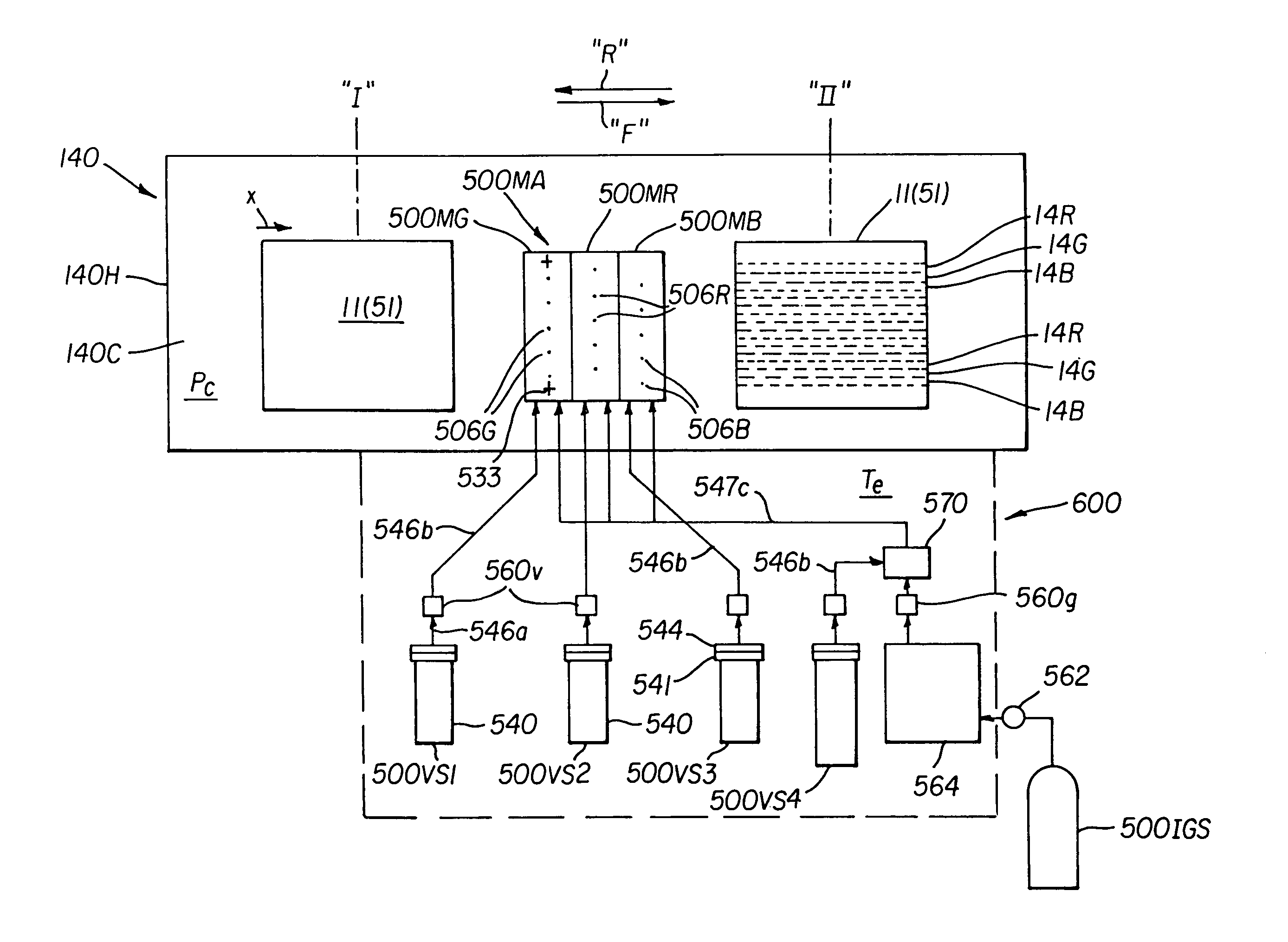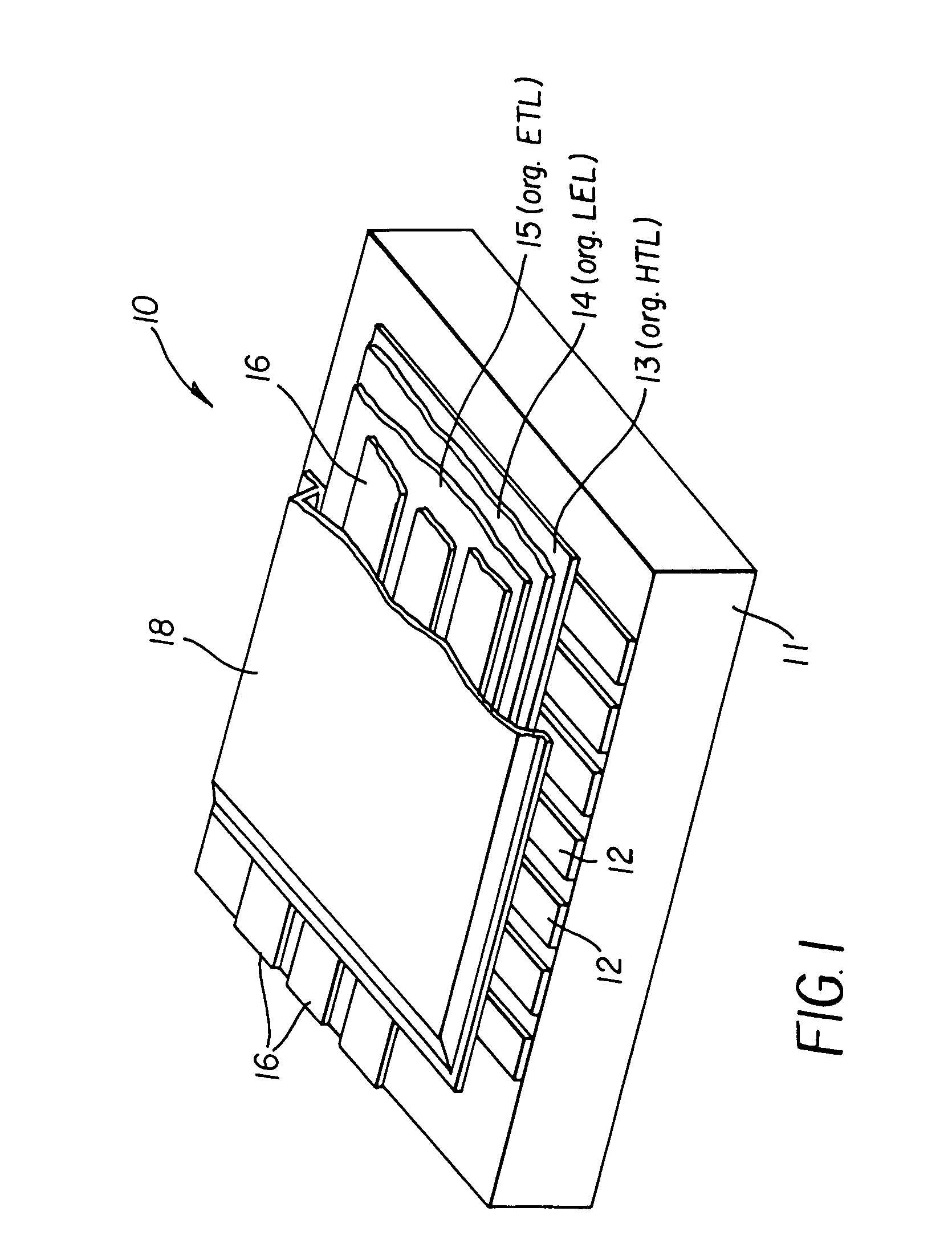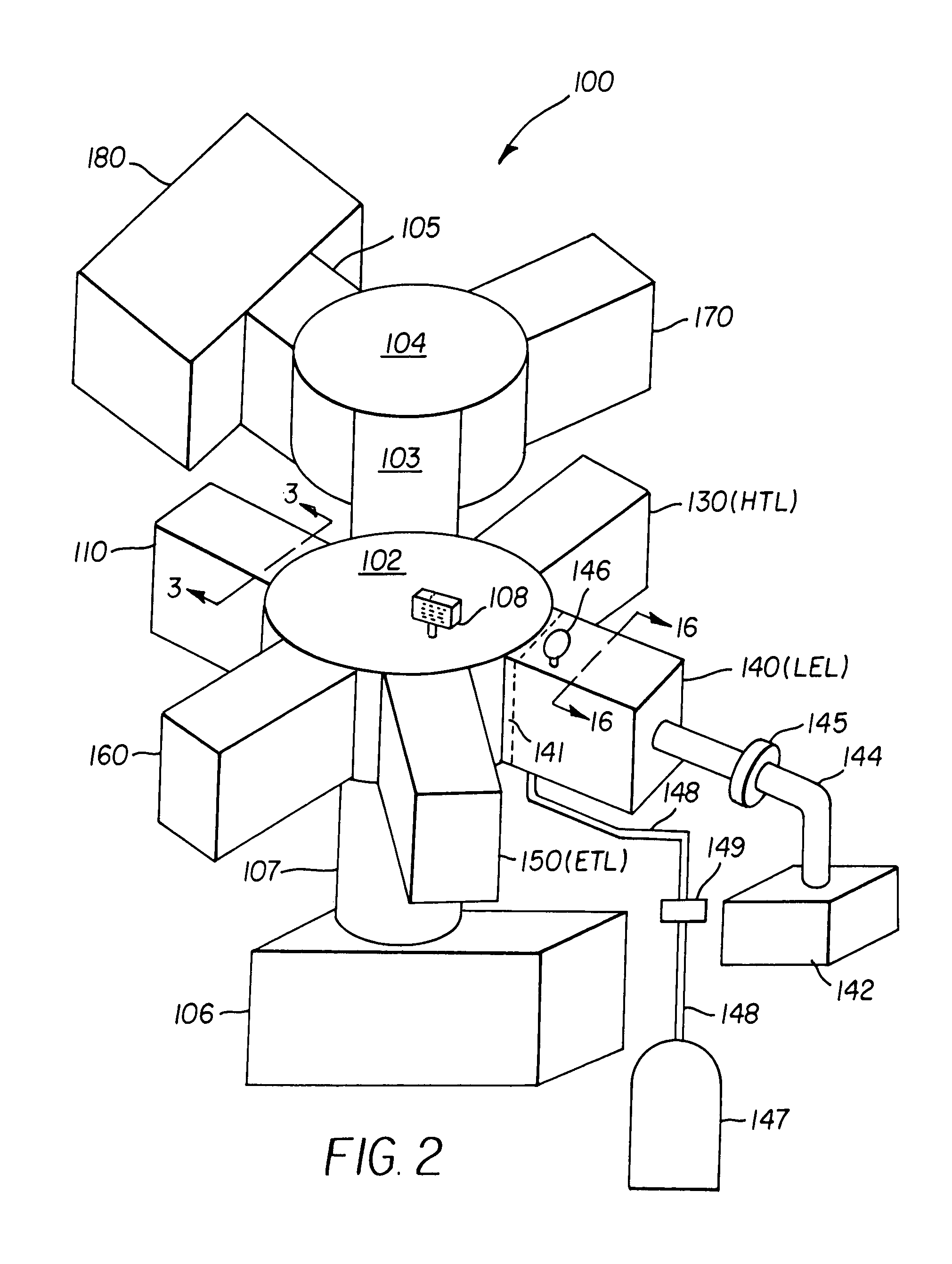Depositing layers in OLED devices using viscous flow
a technology of viscous flow and oled device, which is applied in the direction of electroluminescent light sources, vacuum evaporation coatings, coatings, etc., can solve the problems of direct contact with the surface of the substrate, abrasion, distortion, or partial lifting of the first-color pattern, and partial oxidative decomposition of the uniformly deposited organic ligh
- Summary
- Abstract
- Description
- Claims
- Application Information
AI Technical Summary
Benefits of technology
Problems solved by technology
Method used
Image
Examples
Embodiment Construction
[0067]The drawings are necessarily of a schematic nature since layer thickness dimensions of OLEDs are frequently in the sub-micrometer ranges, while features representing lateral device dimensions can be in a range of 25–2000 millimeter. Furthermore, the plurality of nozzles formed in the nozzle plate(s) or structure(s) is relatively small in size when compared to a length dimension over which the nozzles extend. Accordingly, the drawings are scaled for ease of visualization rather than for dimensional accuracy.
[0068]The term “display” or “display panel” is employed to designate a screen capable of electronically displaying video images or text. The term “pixel” is employed in its art-recognized usage to designate an area of a display panel that can be stimulated to emit light independently of other areas. The term “multicolor” is employed to describe a display panel that is capable of emitting light of a different hue in different areas. In particular, it is employed to describe a...
PUM
| Property | Measurement | Unit |
|---|---|---|
| Length | aaaaa | aaaaa |
| Distance | aaaaa | aaaaa |
| Temperature | aaaaa | aaaaa |
Abstract
Description
Claims
Application Information
 Login to View More
Login to View More - R&D
- Intellectual Property
- Life Sciences
- Materials
- Tech Scout
- Unparalleled Data Quality
- Higher Quality Content
- 60% Fewer Hallucinations
Browse by: Latest US Patents, China's latest patents, Technical Efficacy Thesaurus, Application Domain, Technology Topic, Popular Technical Reports.
© 2025 PatSnap. All rights reserved.Legal|Privacy policy|Modern Slavery Act Transparency Statement|Sitemap|About US| Contact US: help@patsnap.com



